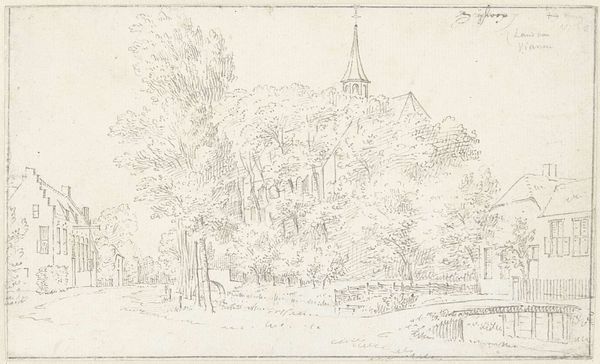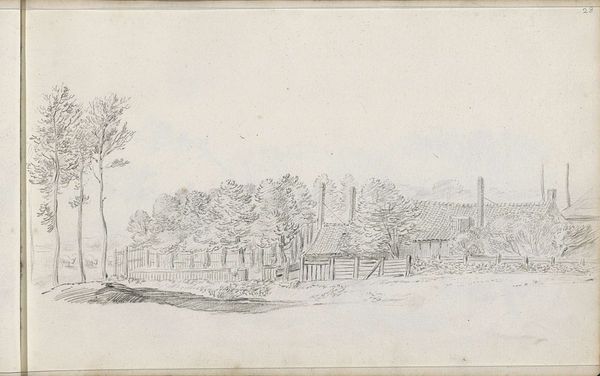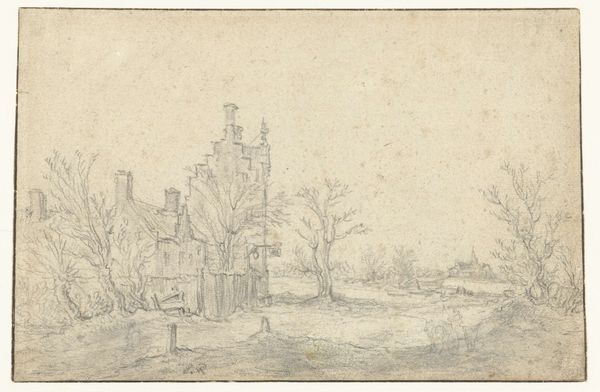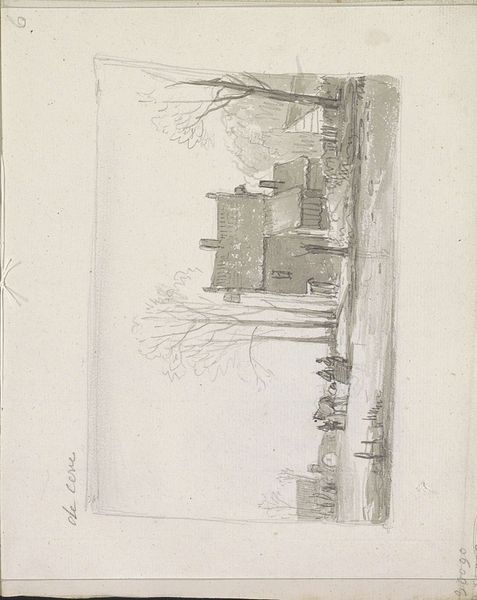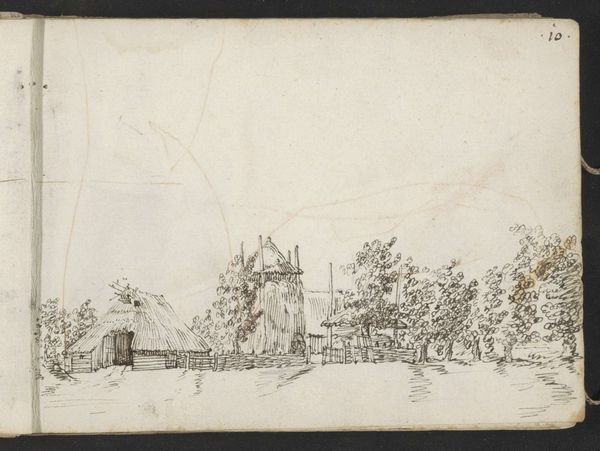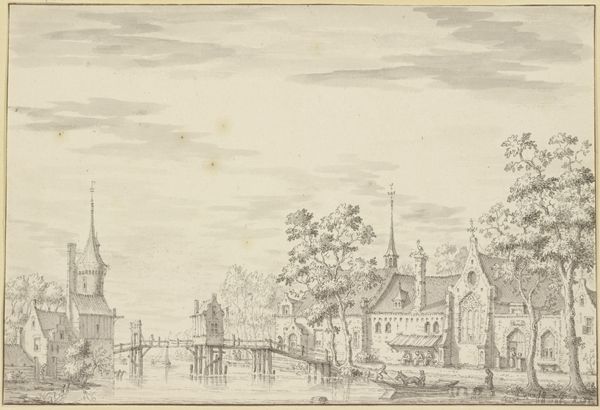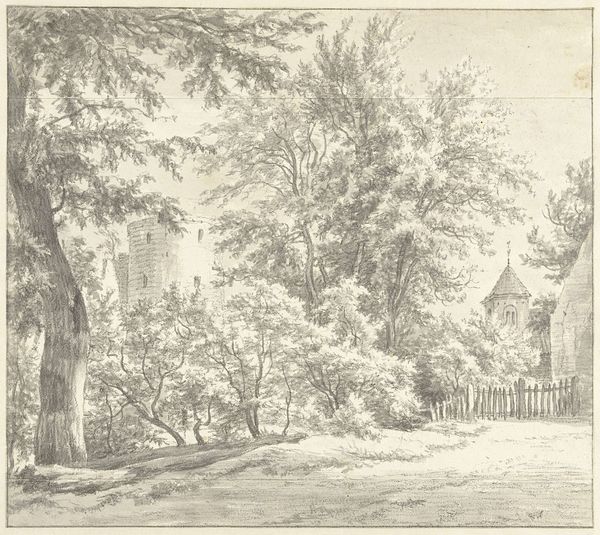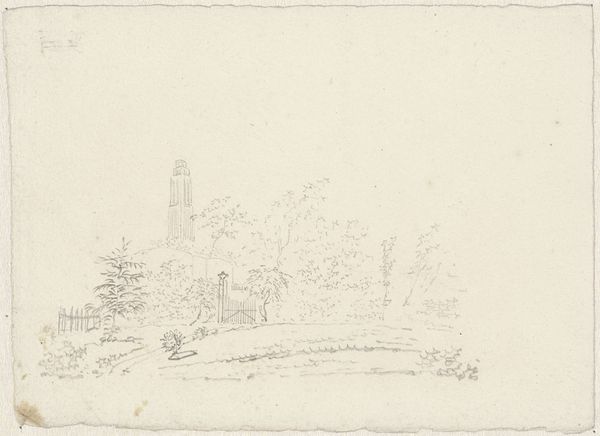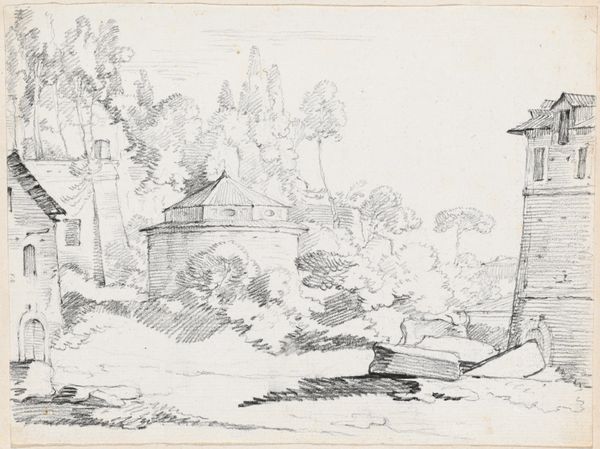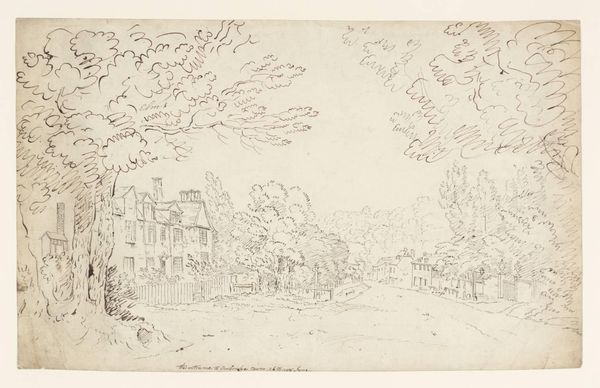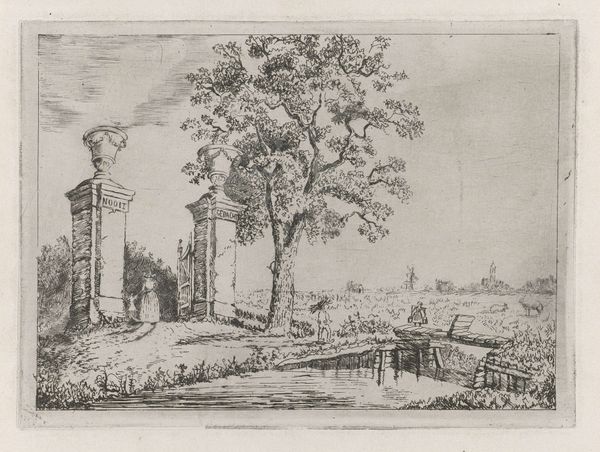
drawing, pencil
#
drawing
#
dutch-golden-age
#
landscape
#
pencil
#
cityscape
Dimensions: height 243 mm, width 335 mm
Copyright: Rijks Museum: Open Domain
Anthonie Beerstraten made this drawing of Huis Kostverloren near Amsterdam in graphite. The scene depicts a grand house and bridge, with figures dotted throughout the landscape. The Dutch Golden Age, roughly the 17th century, saw an explosion of artistic and scientific production in the Netherlands. The Dutch Republic was a major economic power, and this wealth funded a thriving art market. Artists like Beerstraten responded to a growing demand for landscapes, cityscapes, and scenes of everyday life. We can see in this image the influence of the Protestant Reformation on Dutch art. With the rejection of religious imagery, artists focused on secular subjects, and also the growing urbanism and commerce of Amsterdam. This drawing acts as a time capsule, capturing a moment in Dutch history. Art historians can use estate records, maps, and other documents to reconstruct the context in which it was created. By studying this art, we can gain insights into the social, economic, and cultural forces that shaped the Dutch Golden Age.
Comments
No comments
Be the first to comment and join the conversation on the ultimate creative platform.


